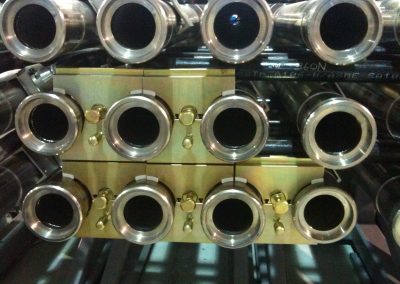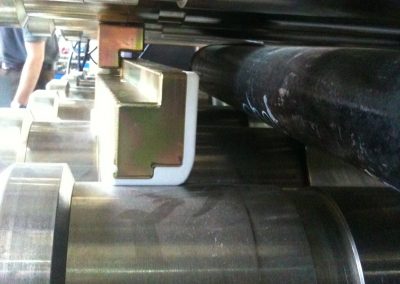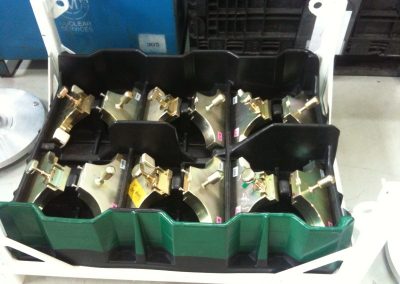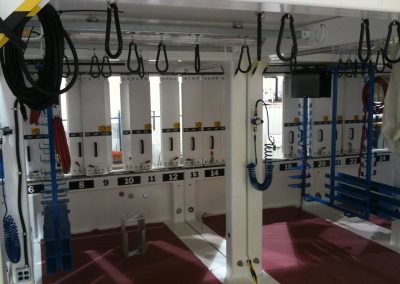Breaking Paradigms, Innovation, Cost Savings
Problem: A nuclear utility customer needs to perform periodic maintenance on their reactors. Although the units are shut down, the radiation exposure to the maintenance crew is still substantial. In addition to the high background radiation, there are often “hot spots” to contend with as well. Workers have limits on the amount of dose they may receive, so the work needs to be shared by many workers (sometimes hundreds) to keep the cumulative dose reasonable for each worker. This makes the maintenance very costly.
Solution: To minimize the dose received by the maintenance crew, Davros proposed the use of a purpose-built working platform, and some configurable shielding.
Two different types of custom “face shielding” were made; either tungsten impregnated silicone, or carbon steel. This shielding cut the dose rates significantly more than previous versions, due to their unique attributes.
-

Quarter turn squeeze fit tungsten-based shielding tile
-

Quarter turn squeeze fit tungsten-based shielding tile
-
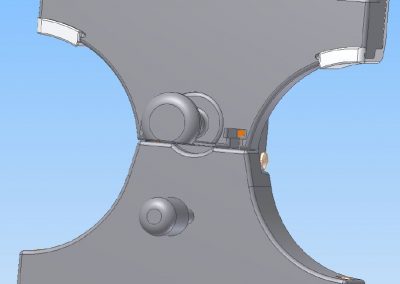
Conceptual CAD model of two-piece steel tile.
Other attempts had been made in the past to cover the reactor face with shielding over the ends of the fuel channel, however, that is not typically the area of highest dose rates. Since the weight of the shielding was limited to what a person can handle, material over the end of the fuel channel was somewhat wasted. Davros recognized this, and focused the shielding between fuel channels, where the “feeder” pipes are the primary source of radiation
Early versions were made with powdered tungsten in a silicone matrix, but these proved to be costly. Future versions were made from plain carbon steel, and split into two manageable sections that connected together. These shielding “tiles” offered many benefits, such as:
- Could be quickly installed and removed.
- Able to assemble a smaller working window than previous square tiles.
- Higher dose rate reduction than previous tiles.
- Recessed further away from the workers, giving more space to work.
- Ship-lapped for better coverage, but still able to be removed randomly.
- Do not need to be removed for fuelling machine access in many cases.
- Can be doubled up for “hot spots”.
- Lower cost than tungsten-based tiles.
In concert with that, Davros proposed a purpose built platform system that provided shielding from all background sources. Not only did this platform system offer better shielding that its predecessor, but it came already equipped with the necessary lights, cameras, outlets, tool racks, etc. that previously had to be set up in-situ with the old platform system. This saved expensive critical path time in the outage.

